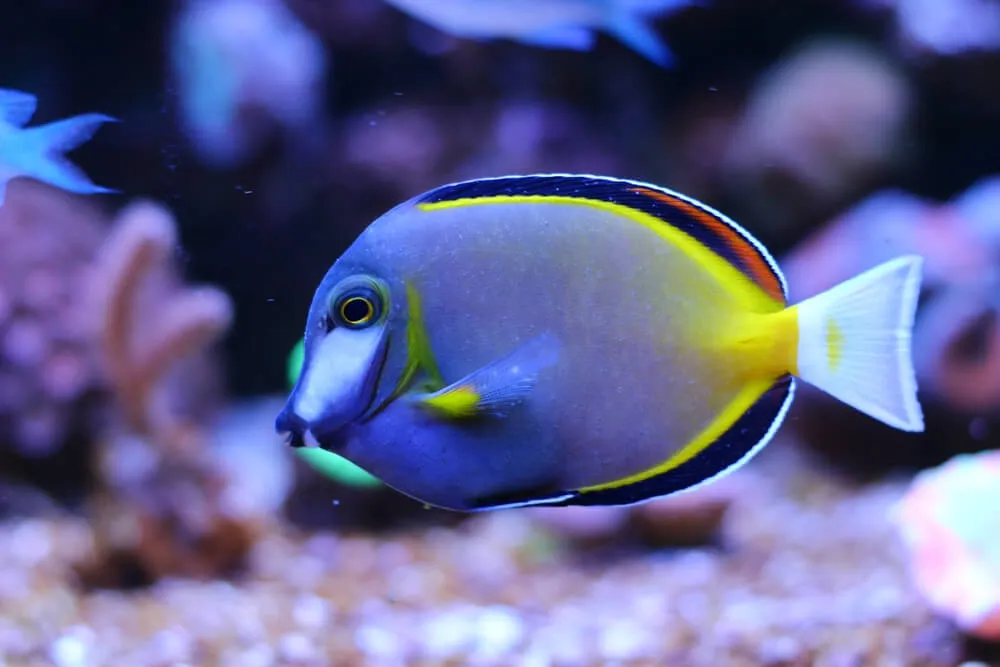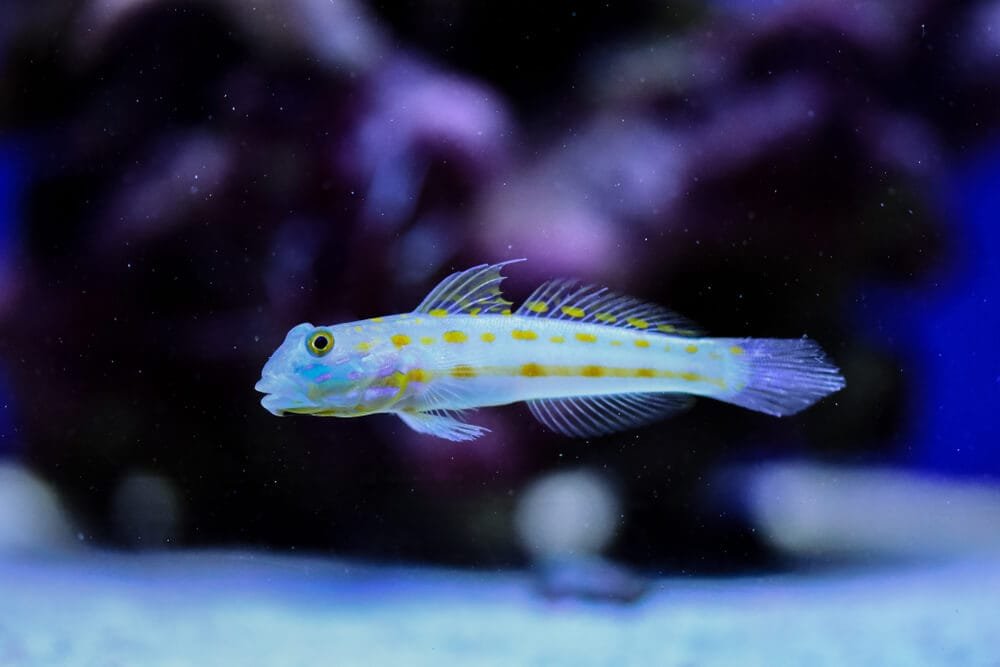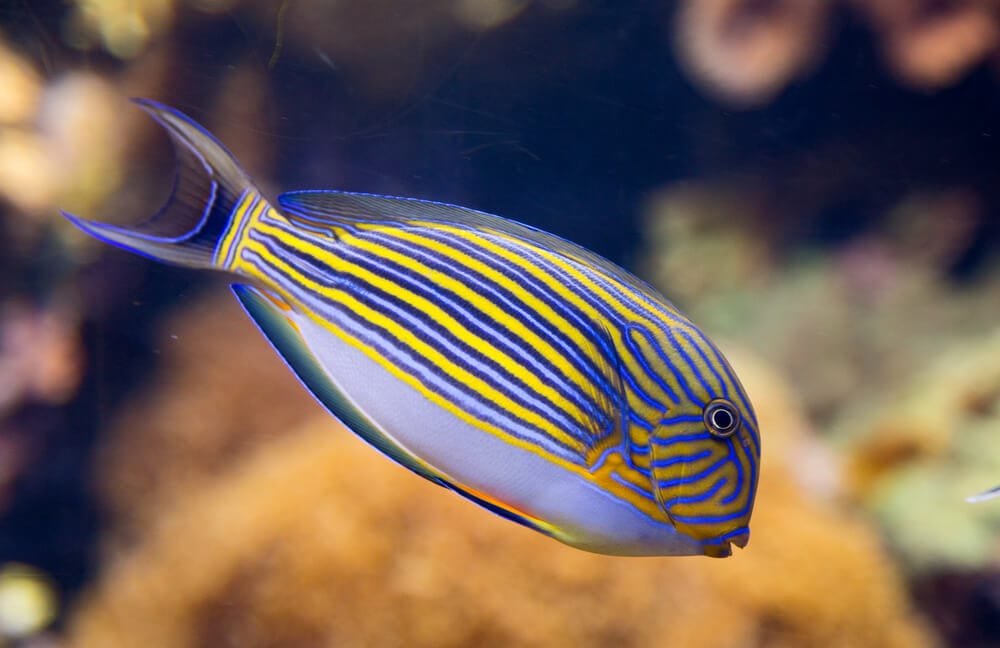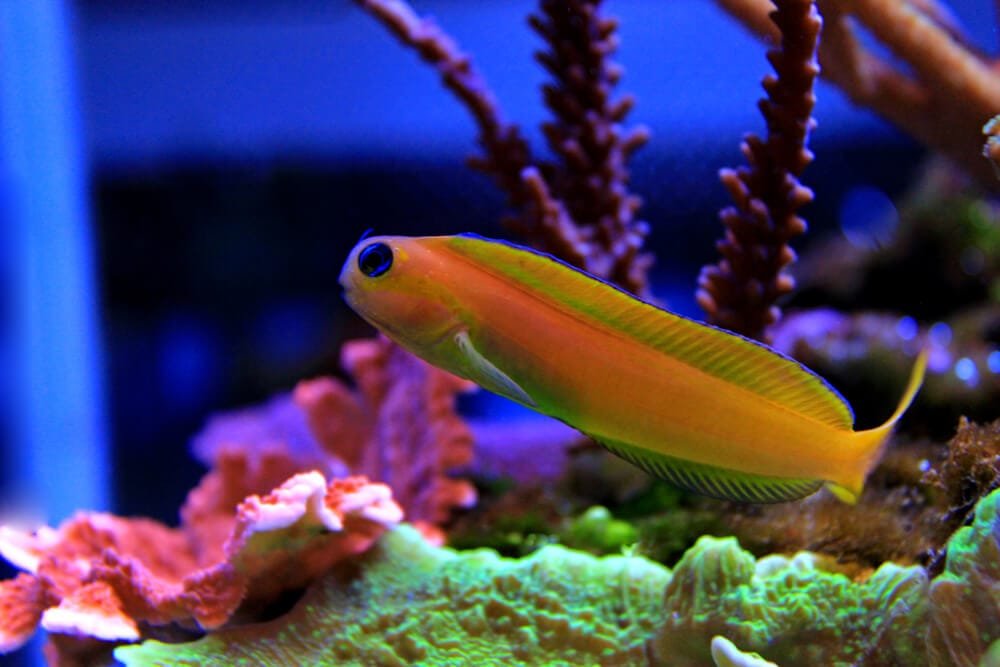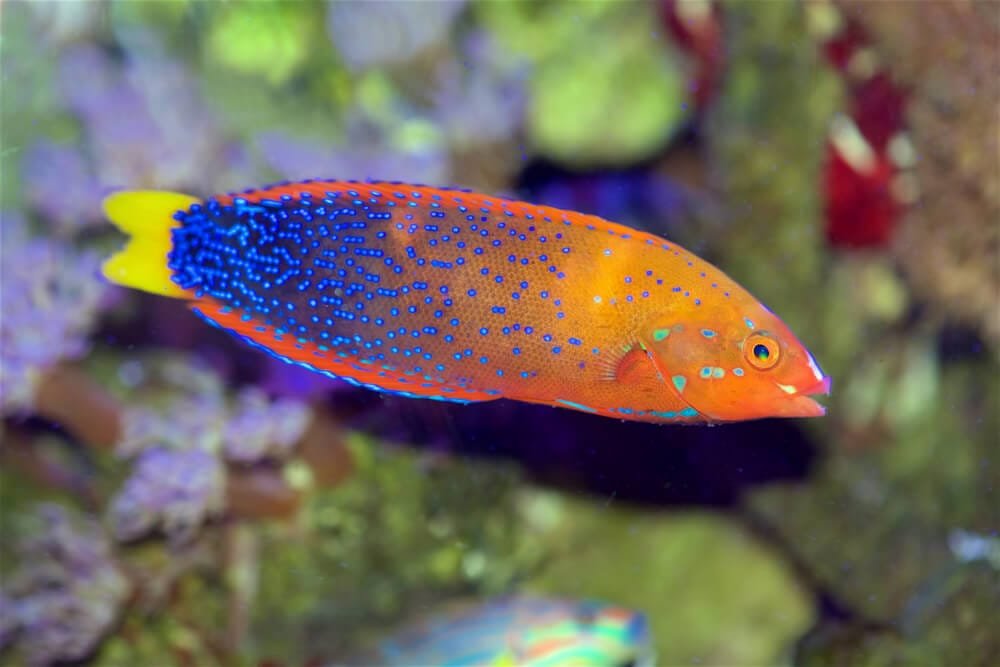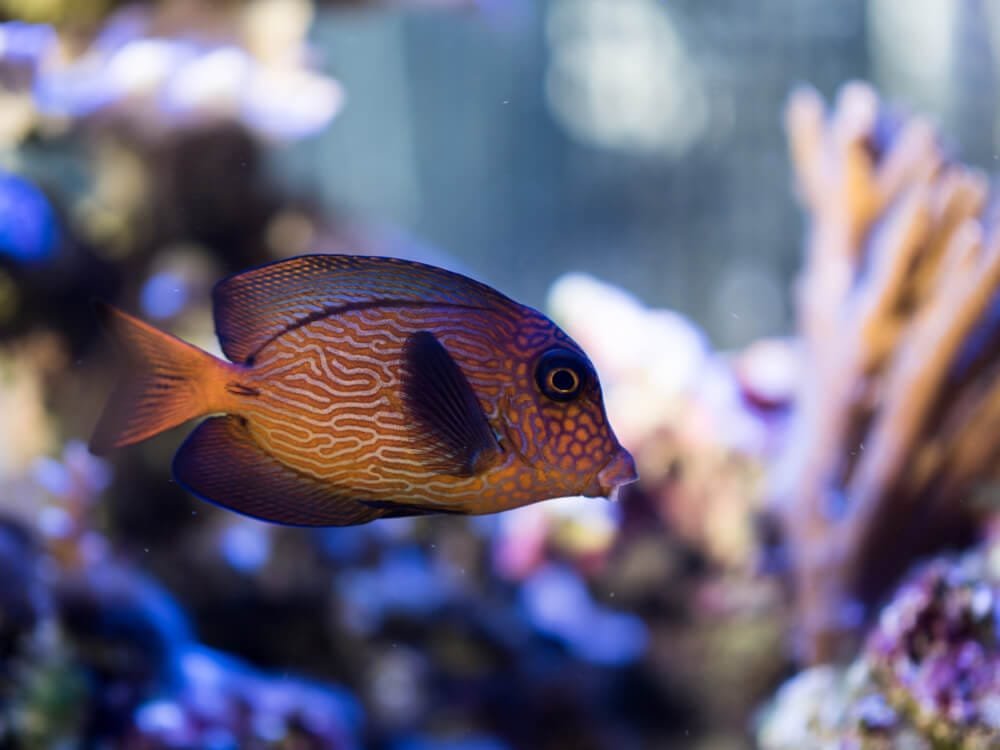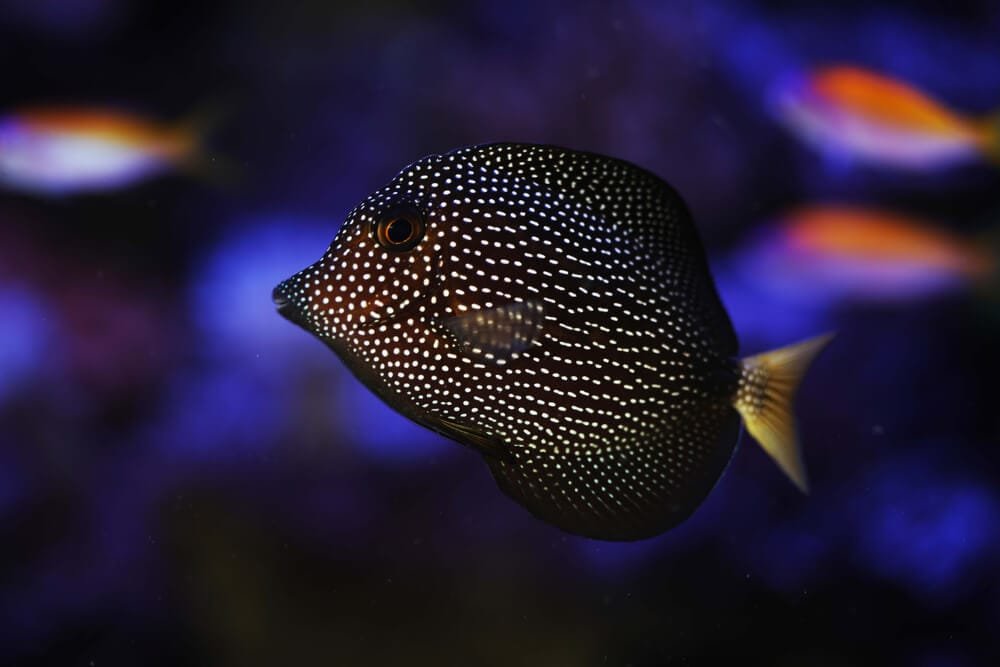Blue Tang (Hippo Tang) 101: A Complete Dive into Care, Habitat and Facts
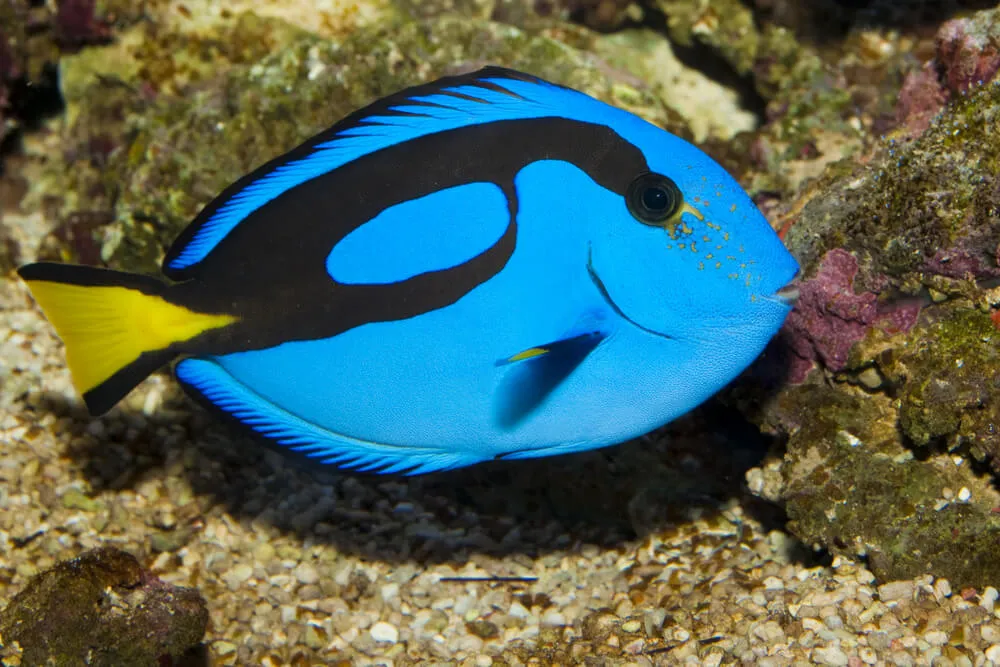
Are you a proud owner of a beautiful Blue Tang fish, or are you considering getting one? Look no further! This comprehensive guide is here to provide you with all the essential information you need to ensure the well-being and happiness of your vibrant aquatic companion.
From setting up the perfect tank environment to maintaining optimal water conditions and meeting their dietary needs, this article will be your go-to resource for all things Blue Tang care. So, let’s dive into this colorful world and discover what it takes to become the ultimate caretaker for these magnificent creatures.
Tank Setup
Setting up a proper tank for your Blue Tang is crucial for its health and well-being. There are several key factors to consider when it comes to the tank setup, including tank size, filtration system, lighting, substrate, and decorations, as well as water parameters.
Tank Size
Blue Tangs are active swimmers and require a tank that is spacious enough for them to freely move around. It is recommended to have a tank with a minimum size of 75 gallons for a single Blue Tang. If you plan to keep multiple Blue Tangs or other fish species with similar activity levels, a larger tank is highly recommended to ensure they have enough space to thrive.
Filtration System
A reliable filtration system is essential to maintain a clean and healthy environment for your Blue Tang. The filtration system should have both mechanical and biological filtration capabilities. Mechanical filtration helps remove large debris and waste particles, while biological filtration promotes the growth of beneficial bacteria that break down harmful substances in the water.
Lighting
Proper lighting is important for the overall well-being and coloration of your Blue Tang. Provide a lighting system that closely replicates natural daylight, with both white and blue spectrum lighting. It is recommended to have a lighting period of 10 to 12 hours per day to mimic the natural day-night cycle.
Substrate and Decorations
Choose a substrate that is suitable for Blue Tangs, such as fine sand or small-grain gravel. Avoid using sharp or rough substrates that may harm the delicate fins or mouthparts of your Blue Tang. As for decorations, provide ample hiding places and areas for your Blue Tang to explore. Live rock formations, artificial corals, and caves are great options to create a natural-looking and stimulating environment.
Water Parameters
Maintaining proper water parameters is crucial for the health of your Blue Tang. The ideal water temperature should range between 75°F and 82°F (24°C to 28°C), with a pH level between 8.1 and 8.4. The salinity, or specific gravity, of the water should be around 1.020 to 1.025. Regular monitoring of water parameters and adjustments when necessary will ensure a suitable living condition for your Blue Tang.
Tank Maintenance
Good tank maintenance practices are necessary to keep your Blue Tang healthy and thriving in its environment. This includes regular water changes, cleaning, temperature control, and water testing.
Regular Water Changes
Performing regular water changes is crucial to maintain clean and stable water conditions. Aim to change approximately 10-20% of the tank water every two weeks, or more frequently if necessary. This helps remove accumulated pollutants and replenish essential minerals and trace elements.
Cleaning
Regular cleaning of the tank and equipment is essential to prevent the buildup of debris, algae, and harmful bacteria. Use a suitable aquarium-safe sponge or brush to gently scrub the inner walls of the tank and remove any algae growth. Clean the filtration system, including the filter media and any protein skimmers, following the manufacturer’s instructions.
Temperature Control
Maintaining a stable water temperature is crucial for the health and well-being of your Blue Tang. Use a reliable heater or chiller to keep the water within the recommended temperature range. Regularly check the temperature and make adjustments as needed to ensure a stable environment for your fish.
Water Testing
Regularly testing the water parameters is a crucial aspect of tank maintenance. Use a reliable test kit to monitor the levels of ammonia, nitrite, nitrate, pH, and salinity. This will help you identify any potential issues and take appropriate actions to maintain optimal water quality for your Blue Tang.
Feeding Blue Tangs
Providing a proper diet and feeding schedule is essential for the health and nutritional needs of your Blue Tang. Blue Tangs are herbivorous fish that primarily feed on marine algae and seaweed in the wild.
Diet
Offer a varied diet consisting of high-quality marine algae and commercially available prepared foods. Provide a mix of dried seaweed sheets, specifically formulated herbivore pellets, and frozen or fresh marine algae. Aim to mimic their natural diet as closely as possible to ensure their nutritional needs are met.
Feeding Schedule
Feed your Blue Tang small amounts of food multiple times throughout the day instead of a large meal at once. This allows them to graze naturally and prevents overeating. Aim for 2 to 3 feedings per day, spacing them out evenly.
Feeding Techniques
Attach a seaweed clip or use a feeding station to offer seaweed sheets for your Blue Tang to graze on. This helps simulate their natural feeding behavior. For pellet or flake foods, sprinkle them lightly across the water surface to encourage natural foraging behaviors.
Blue Tang Behavior
Understanding the natural behavior of Blue Tangs will help you provide them with an environment and tankmates that allow them to thrive.
Natural Behavior
Blue Tangs are highly active swimmers that continuously graze on algae in the wild. They are known for their vibrant coloration and distinctively shaped bodies. Blue Tangs also have a symbiotic relationship with cleaner fish, where they visit “cleaning stations” to have parasites and dead skin removed.
Compatibility with Other Fish
Blue Tangs are generally peaceful fish but can be territorial, especially when it comes to their feeding areas. It is important to choose tankmates that are compatible with their somewhat aggressive feeding behavior. Avoid keeping them with overly aggressive or larger fish that may intimidate or harm them.
Aggressive Behavior
While Blue Tangs are generally peaceful, they may exhibit aggression towards fish of similar appearance or body shape. This behavior is more commonly observed in larger tanks where multiple Blue Tangs are kept together. Keeping a single Blue Tang or providing ample hiding spots and territories for multiple Blue Tangs can help minimize aggression.
Breeding Behavior
Breeding Blue Tangs in a home aquarium setting is extremely rare. Their reproduction process involves complex behaviors and requires specific conditions. It is best to enjoy the beauty of Blue Tangs in a display tank rather than attempting to breed them.
Common Health Issues
Blue Tangs are relatively hardy fish but may be susceptible to certain health issues if their care requirements are not met.
Ich
Ich, or white spot disease, is a common parasitic infection that affects many fish species, including Blue Tangs. It manifests as tiny white spots on the fish’s body and fins. Quarantine new fish before introducing them to the main tank, and maintain good water quality to prevent and treat ich.
Marine Velvet
Marine velvet is another parasitic infection that can affect Blue Tangs. It causes a velvety appearance on the fish’s skin and may lead to rapid weight loss and deterioration if left untreated. Quarantine new fish and regularly observe for any signs of velvet. Use appropriate medications as directed to eliminate the parasites.
Bacterial Infections
Bacterial infections can occur if the water conditions are poor or if the fish sustains an injury. Common signs include redness, sores, or fin rot. Maintain excellent water quality and promptly address any injuries or signs of infection with appropriate medication and treatment.
Fin Erosion
Fin erosion, also known as fin rot, can occur due to poor water quality or bacterial infections. This condition causes the deterioration of the fish’s fins, leading to a ragged or frayed appearance. It is essential to maintain good water quality, provide a balanced diet, and promptly address any signs of fin erosion through proper treatment.
Parasites
Blue Tangs can be affected by various external and internal parasites, including flukes, worms, and protozoa. Regular observation and proper quarantine procedures can help prevent the introduction of parasites into the main tank. Prompt treatment with appropriate medications is essential if parasites are detected.
Blue Tang Acclimation
Proper acclimation is crucial when introducing a Blue Tang to its new tank environment. This process helps minimize stress and allows the fish to adjust to the new water conditions gradually.
Acclimation Process
To acclimate your Blue Tang, float the bag containing the fish in the tank water for around 20 to 30 minutes. This helps equalize the temperature. Afterward, open the bag and gradually add small amounts of tank water to the bag every few minutes. Once the bag is filled with mostly tank water, gently release the fish into the tank using a net.
Quarantine Tank
Quarantining new fish before introducing them to the main tank is highly recommended. This allows you to observe their behavior and monitor for any signs of illness or compatibility issues. A separate quarantine tank should be set up with similar water conditions to the main tank and should be well-maintained and filtered.
Introducing to the Main Tank
When introducing a Blue Tang to the main tank from the quarantine tank, it is essential to do so gradually. Initially, float the bag containing the Blue Tang in the main tank for around 10 to 15 minutes to equalize the water temperature. Then, proceed with the acclimation process described earlier. This gradual introduction helps minimize stress and allows the Blue Tang to acclimate smoothly.
Handling Blue Tangs
Though it is generally best to avoid excessive handling of fish, there may be times when it becomes necessary to handle your Blue Tang, such as during tank maintenance or medical treatment.
Netting Technique
When using a net to handle your Blue Tang, approach slowly and gently guide it into the net. Make sure the net is large enough to comfortably accommodate the fish. Avoid rushing or making sudden movements, as this can startle and stress the Blue Tang.
Using a Container
For short-term handling or transportation, you may opt to use a clean, fish-safe container instead of a net. Fill the container with tank water, making sure it is deep enough to prevent the Blue Tang from jumping out. Gently transfer the Blue Tang into the container and secure the lid to prevent any escapes.
Minimizing Stress
Handling should be kept to a minimum and done with care to minimize stress for your Blue Tang. Limit handling to only when necessary and provide a quiet and calm environment during the process. Minimizing stress will help maintain the overall health and well-being of your fish.
Choosing Tankmates
When selecting tankmates for your Blue Tang, it is essential to consider their compatibility and the potential impact on the overall tank dynamics.
Fish Species
When choosing fish species to coexist with your Blue Tang, opt for peaceful and non-aggressive species. Avoid keeping them with larger predatory fish or fish species with a similar body shape or coloration, as this can lead to territorial disputes or aggression.
Invertebrates
Many invertebrates, such as shrimp and snails, can make suitable tankmates for Blue Tangs. Ensure that the invertebrates are reef-safe and compatible with your Blue Tang’s behavior. Avoid species that may be harassed or become prey for the Blue Tang.
Corals
Blue Tangs are generally reef-safe and can be kept with a variety of coral species. However, it is essential to consider their active swimming behavior and provide enough open space for them to navigate without damaging corals. Soft corals and large-polyp stony corals are often better choices due to their hardiness.
Algae Eaters
Blue Tangs are known for their natural ability to graze on algae, making them beneficial in controlling algae growth in the tank. However, it is important to balance their diet and not rely solely on them for algae control. Introducing other algae-eating fish, such as various species of tangs or blennies, can help maintain a healthy balance in the tank.
Blue Tang Lifespan
Providing proper care and meeting the specific needs of your Blue Tang can contribute to its longevity and overall lifespan.
Factors Affecting Lifespan
The lifespan of a Blue Tang can vary depending on various factors, including the overall health and genetics of the individual fish, the quality of care provided, and the environmental conditions in which it is kept. Blue Tangs can live up to 10 years or longer in ideal conditions.
Proper Care for Longevity
To ensure the longevity of your Blue Tang, focus on providing a well-maintained tank with proper filtration, regular water changes, and adequate feeding. Maintain good water quality and monitor for any signs of illness. Additionally, provide a suitable environment that stimulates natural behaviors and minimize stress as much as possible.
Conclusion
In conclusion, proper care and attention to detail are essential when keeping a Blue Tang as a pet. From setting up the tank to providing a suitable diet and tankmates, every aspect of their care plays a significant role in their health and well-being. By following the guidelines outlined in this care guide, you can create a thriving and beautiful environment for your Blue Tang to flourish and enjoy for many years to come.
